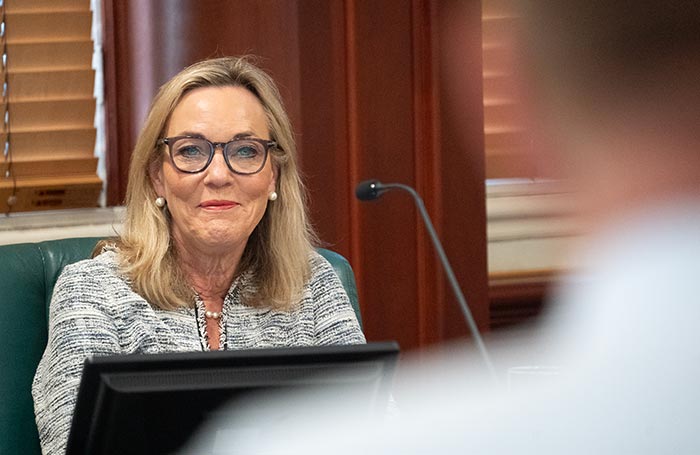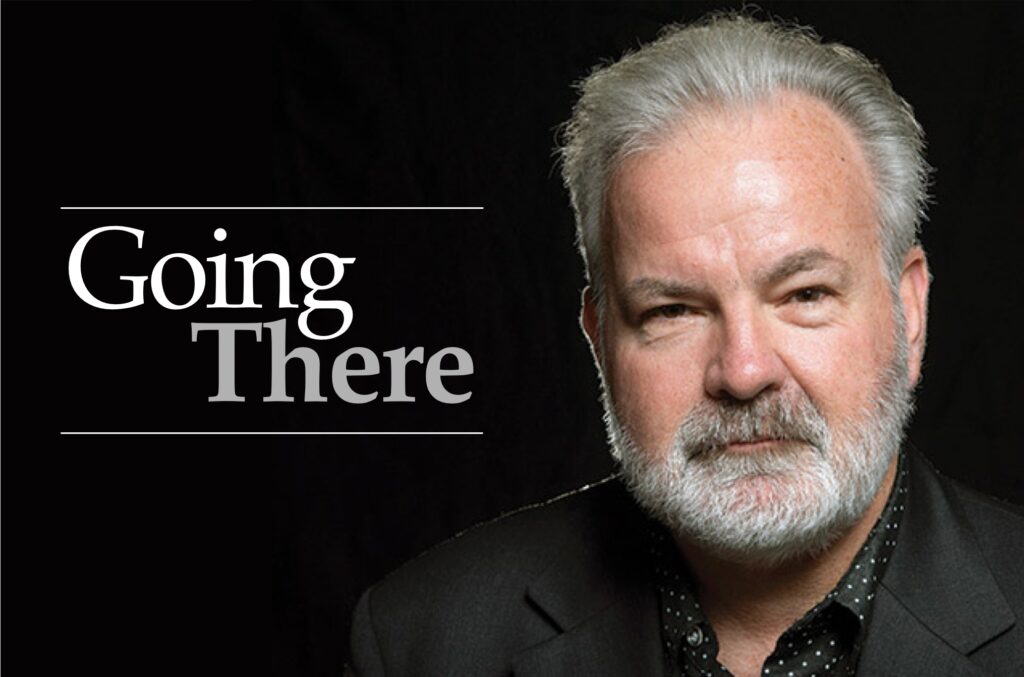Council reviews key issues at annual supervisor meeting

By Andrew Alonzo | aalonzo@claremont-courier.com
The Claremont City Council welcomed Los Angeles County Fifth District Supervisor Kathryn Barger to the council chambers April 2 to speak about local concerns regarding emergency preparedness following the January wildfires. Other topics included Interstate 10 projects, Measure A funding, park guidelines, regional bike lanes and funding for Pomona Valley Transportation Authority.
Emergency preparedness
Although it’s been just three months since devastating county wildfires, Claremont Mayor Corey Calaycay began by asking LA County Fire Chief Anthony Marrone if interagency communication between Los Angeles and San Bernardino counties emergency services during a disaster has improved over the years.
While Chief Marrone agreed interagency cooperation across county borders can improve, he said he maintains a good line of communication with San Bernardino County Fire Chief Dan Munsey, whom Chief Marrone called on for assistance during the Eaton Fire. Marrone also said the department has access to the Los Angeles Regional Interoperable Communication System and an emergency radio plan, both of which are used to keep agencies in touch during disaster.
Council member Ed Reece inquired about the county’s review of false emergency notifications during the recent fires, and Supervisor Barger said those reports will be shared with City Manager Adam Pirrie.
Chief Marrone also spoke of the lessons learned about protecting one’s property from a wildfire, saying the county is looking into plans that focus on home hardening, defensible space, forest and wildland management, and fuel mitigation.
“What we’ve come to realize is that having a home that’s defensible or stand-alone might protect life as well for those people who can’t evacuate,” he said. “If we can better take care of the wildland space adjacent to homes, if we could better make sure that we have defensible space, and if we can make sure that that home is hardened against embers, people might be able to survive a wildland fire without evacuating.”
Freeway sound wall
Council member Medina started by inquiring about when a sound wall barrier would be installed along the 10 Freeway near Indian Hill Boulevard. In the past, south Claremont residents have raised concern about the noise generated.
Philbert Wong, senior director of LA County Metropolitan Transportation Authority, said Metro has conducted noise studies in the area and incorporated a sound wall barrier into an express lane project on the 10 Freeway above Indian Hill. The project is currently in the environmental impact review phase. Funding for construction has not been determined.
Supervisor Barger asked if the sound wall could be built outside the project. Wong said that was a possibility if funding was identified.
Later, in response to a question by Mayor Calaycay if there were plans to widen the Indian Hill Boulevard underpass at the 10 Freeway, Wong said no as the current project does not call for impacting the underpass. The answer frustrated Council member Medina and Mayor Calaycay, who said underpasses to the west and east of Claremont have been altered to accommodate the projected increase in traffic.
Supervisor Barger said her office will aid in prioritizing the sound wall’s construction.
Measure A update
Last year, voters passed Measure A which repealed Measure H and implemented a new countywide ½ cent sales tax effective April 1 to fund homeless services and prevention. It’s projected to raise over $1 billion annually according to Onnie Williams III of the LA County Homeless Initiative.
The first disbursement of funding is set to go out by the end of June, according to Council member Jed Leano, who inquired about small cities receiving additional funding. Williams said that so long as a city is working toward homelessness services and addressing housing needs set for by the county, opportunities for additional funding will arise.
Strict legal oversight and accountability will be enforced. Williams said “every funding recipient,” which includes cities, jurisdictions or entities such as the San Gabriel Valley Council of Governments, will “have to report annually not only on their financials, but what projects and work are they actually using their funds for.”
Supervisor Barger said cities within SGVCOG that don’t utilize their full Measure A allocation, can essentially put money back into the pot for others to draw upon.
Park consistency
A discussion about red flag related park closures prompted Alina Bokde, chief deputy director for LA County Parks and Recreation, to say the county assesses national weather reports and coordinates with its Office of Emergency Management and fire departments to determine if park trails and access points should be closed ahead of an emergency or weather event.
When asked about e-bike enforcement in county parks, Bokde said they’re not prohibited. “Again, all of our trails are multi-use,” Bokde said, “and so anyone’s welcomed as long as they follow the rules to use our trail systems.”
To better address city and county park priorities, the county formed a multi-jurisdictional trail task force during the pandemic to discuss trail issues, closures and policy goals with representatives from 88 LA County cities and jurisdictions around trails. Community Services Director Jeremy Swan is Claremont’s representative on the task force.
Regional bike lanes
A carryover item from last year, city officials sought renewed commitment from county officials to extend bike lanes along Base Line Road from Claremont into La Verne. Steve Burger, deputy director of transportation for LA County Public Works, reassured the county’s commitment.
He said that while the county has been working with the California Department of Transportation to move the project along, city officials were cautioned that concessions may have to be made with street parking in order to fit bike lanes.










0 Comments